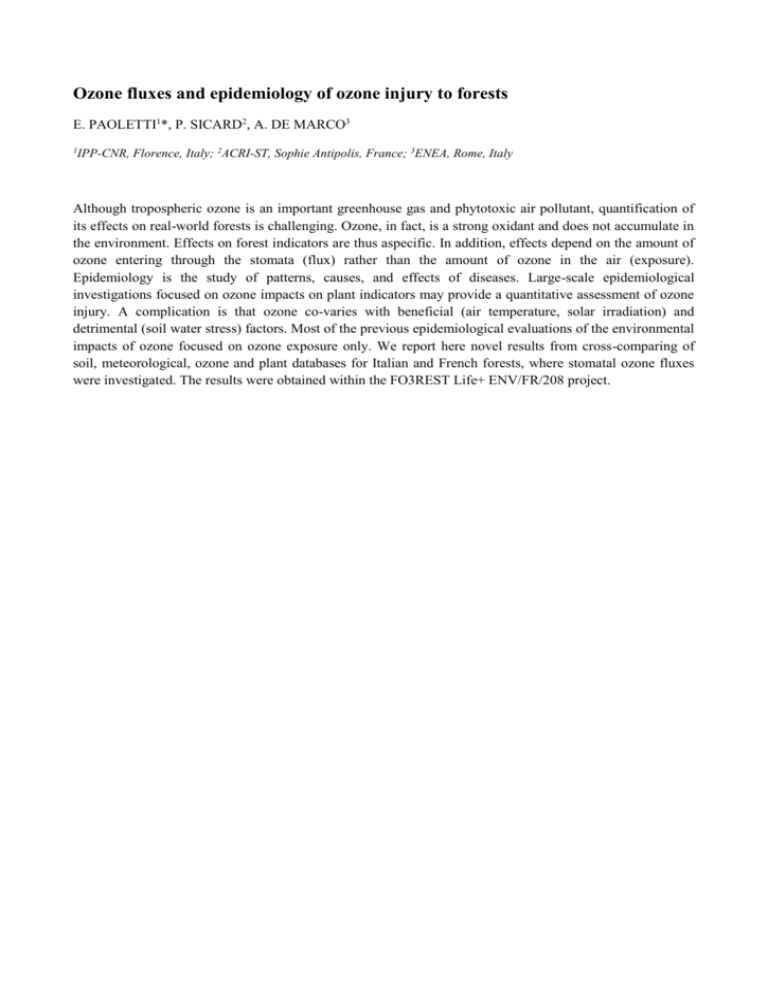Ozone fluxes and epidemiology of ozone injury to forests
advertisement

Ozone fluxes and epidemiology of ozone injury to forests E. PAOLETTI1*, P. SICARD2, A. DE MARCO3 1 IPP-CNR, Florence, Italy; 2ACRI-ST, Sophie Antipolis, France; 3ENEA, Rome, Italy Although tropospheric ozone is an important greenhouse gas and phytotoxic air pollutant, quantification of its effects on real-world forests is challenging. Ozone, in fact, is a strong oxidant and does not accumulate in the environment. Effects on forest indicators are thus aspecific. In addition, effects depend on the amount of ozone entering through the stomata (flux) rather than the amount of ozone in the air (exposure). Epidemiology is the study of patterns, causes, and effects of diseases. Large-scale epidemiological investigations focused on ozone impacts on plant indicators may provide a quantitative assessment of ozone injury. A complication is that ozone co-varies with beneficial (air temperature, solar irradiation) and detrimental (soil water stress) factors. Most of the previous epidemiological evaluations of the environmental impacts of ozone focused on ozone exposure only. We report here novel results from cross-comparing of soil, meteorological, ozone and plant databases for Italian and French forests, where stomatal ozone fluxes were investigated. The results were obtained within the FO3REST Life+ ENV/FR/208 project.






